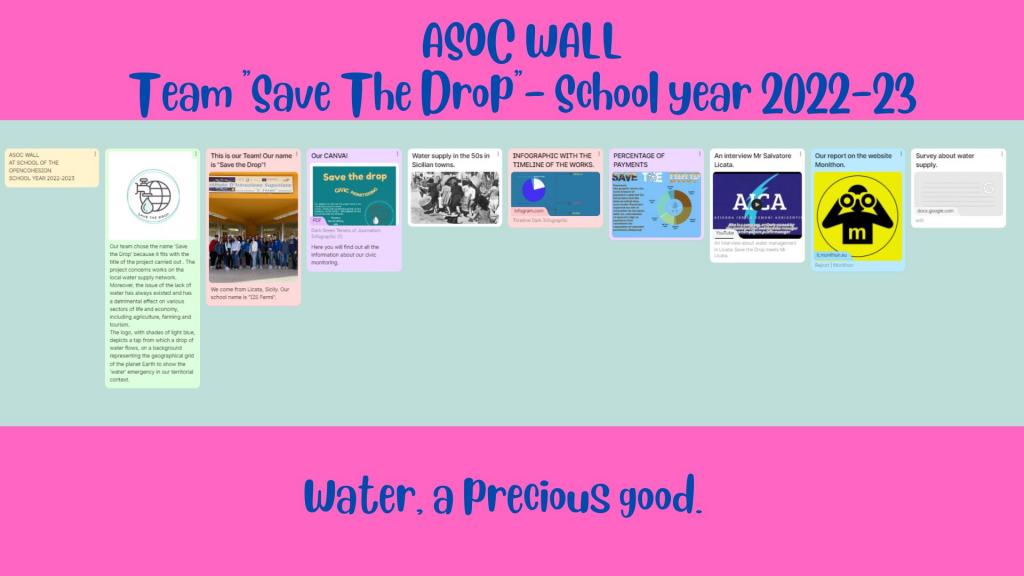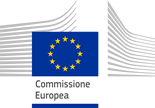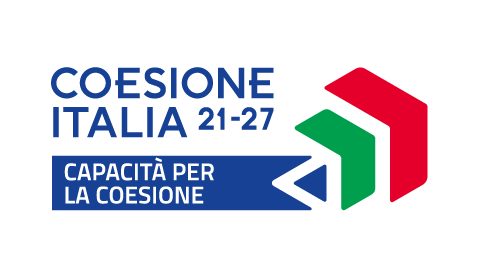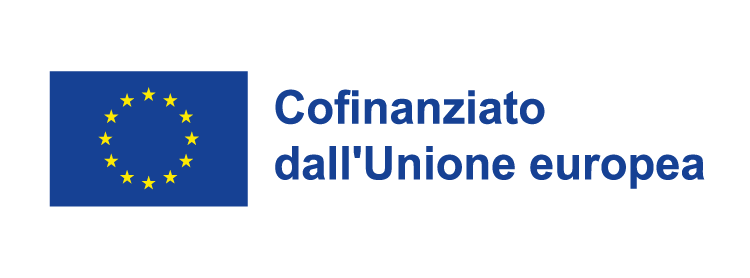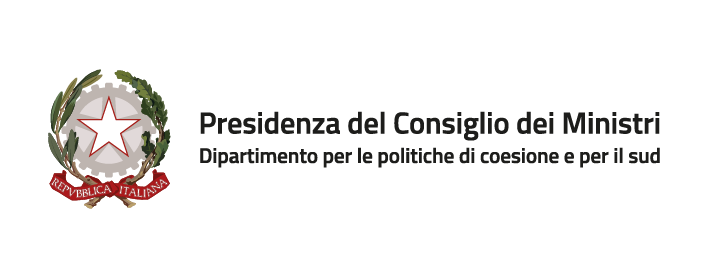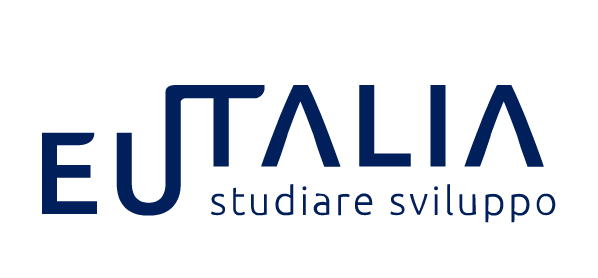Our project,called “WORKS FOR THE RATIONALISATION OF THE MUNICIPAL WATER SYSTEM - REPLACEMENT OF THE OLD OR DAMAGED WATER MAINS”. It was carried out in Licata. It was included in the actions to improve infrastractures in the sector of the environment. It is a meaningful topic because in our town over the years we have always had trouble with poor water supply. Our team is called 'Save the Drop'. In Licata the issue of the lack of water has always existed and has a detrimental effect on various sectors of life and economy. The project was totally financed with 3.955.431,62 €. An amount of 137.815.00 were financed by State funds. An amount of 825.258.00 were financed by the regional funds. An amount of 679.816.00 came from Private funds. The sum of public financing was 3.852.296.00 euros. The total amount of the economies is 389.194.00 euros; the total amount of the public economies was 330˙814.00 euros. The contextual information were searched on websites, portals, online newspapers, interviews. The research objective is to let people raise their awareness about the preciousness of water in their lives. They could be encouraged not to waste it, to find ways to recycle it. With our monitoring, people were better informed about the water emergency also related to the increasing global warming. Our research has probably made citizens aware of the importance public and European funds. We found out information by surveys and interviews.
The project involves the creation of a communication network between the various reservoirs in the city to make the water supply more efficient. In case one reservoir is not functioning properly, supply can be made by connecting with other reservoirs. The scheduled start is 03 February 2015, while the scheduled end is 02 December 2015. Actually the real end of the project takes place on 9th September 2016.
There is no much news about the public decisions and administrative procedures that gave rise to the project since Girgenti Acque has gone through several court cases and today has also changed its corporate structure.
Citizens are those who can benefit from the outcomes of the. Anyway, the issue of shortage of water is not definetely solved.
The very serious water crisis, that has always plagued Licata, was the subject of a television report entitled "The Great Thirst." on RAI in 1966. Licata's water crisis was later recounted by Danilo Dolci; his denunciation failed to change an emergency that still in 1967 was forcing Licata residents to have running water every 20 days.
The "Mancini Law" financed with three and a half billion liras the remaking of the city's water supply network; the company that completed the work, however, managed to have black water seep into the new pipes, worsening conditions for the 40,000 inhabitants. As the decades passed, the water shortage did not cease. In 1974, Licata could dispose of 10 or 12 liters per second.
Even today, water distribution in Licata relies on daily shifts for urban and suburban areas. Today one should receive 100/q20 l/s and in summer 20/30 liters more, but this does not happen regularly. Perennial rationing has now entered the habits of thousands of citizens. The project was already completed in 2016. However, from the interview with Mr. Licata, the mayor's delegate in both ATI and AICA, according to Article 6 of ATI's Bylaws, it was found that the intervention was not fully effective because there is still 52% water leakage, as certified by AICA. Moreover, by the survey, we found out that there are still areas without proper water mains.
The results obtained from the project were overall positive but the water supply continues to be very limited.
Similar actions could increase the effectiveness of the monitored project. Considering the local but above all global situation, there is an urgent need to focus on the issue of water management in order to identify new and innovative approaches and methodologies for the use and governance of this resource. All of this is also in compliance with the Sustainable Development Goals identified by the United Nations and sanctioned by the 2030 Agenda: within which there is a specific dictate, Goal 6, which formalises the need to "Ensure the availability and sustainable management of water and sanitation for all".We found out that there are estimated amounts of the new plan for Licata from 2021 for the 30 years to follow: Aqueducts (749,026 euros); pipelines and fixed hydraulic works (9,980,842 euros); electronic measurement group (729,720 euros); Sewerage sector, pipelines fixed hydraulic works (7,254,930 euros); lifting and pumping plants (70. 764 euros); sewage lifting and pumping plants (1,424,028 euros); treatment plants (982,999 euros ); lifting and pumping plants (219,026 euros); reservoirs (41,317 euros). This is a good hope for the future. As a team, we suggest interventions of desalination, rainwater, purifiers and multi-functional ponds.
